#celtic magick
Text
it saddens me how predatory and scammy practitioners can be, here on tumblr but especially on tik tok, which has made me wary of posting my tarot readings online. i think it’s irresponsible to prey on audiences who are susceptible to culty concepts like “twin flames” and a lot of manifestation content out there. especially since many of you seem so young, i hope anybody who comes across my blog or work recognizes tarot as a tool rather than unequivocal truth.
#tarot blog#new age spirituality#twin flame#spiritual toxicity#manifesting#manifestation#witchcraft#psychic readings#witchblr#pagan#wicca#traditional tarot#hellenic polytheistic#hellenic pagan#celtic magick#divination#astrology tarot#magick#ave satanas#satanic#satanist
247 notes
·
View notes
Text




Simplistic Celtic Tree of Life Charm Bracelet made with Moss Agate, Aventurine and Flourite. This Celtic Charm Bracelet is a perfect gift for any Nature Lover Bracelet, Pagan, or to show your love for the Circle of Life in the Irish Traditions.
This bracelet measures at 7.5 inches and comes with an organza bag for easy carring or storage.
#celtic polytheism#celtic paganism#Celtic pagan#paganism#celtic magick#celtic pantheon#celtic jewelry#tree of life#irish paganism#druidry#pagan community#pagan jewelry#witchblr#witchcraft#witchythings#hand made jewelry#witch community#charm bracelet#crystal bracelets#crystal bracelet#witchy jewelry#pagans of tumblr#paganpride#moss agate#hand made#witchcore#cottageblr#cottage aesthetic#nature#nature aesthetic
19 notes
·
View notes
Text
Wonderful Celtic Music.
youtube
#celtic music#youtube#background music#music#relaxing music#youtube video#music video#relaxing#celtic magick#instrumental music#youtube music#Youtube
1 note
·
View note
Text

All About Imbolc
Imbolc, also known as Imbolg, celebrated on February 1st, marks the halfway point between the winter solstice and the spring equinox in early Ireland and Scotland, and also signified the beginning of the first signs of spring after all the harsh winter days. Originally a pagan holdiay in pre-Christian times, there is little in writing about the historic traditions and customs, although many historians believe it revolved around the Celtic Goddess Brigid, lambing season, and cleansing due to observed ancient poetry.
Brigid is a Goddess and daughter of the father-God of Ireland, Dagda. She is associated with quite a few things depending on the sources, but universally associated with wisdom and poetry. Other associations of hers are blacksmithing, protection, domesticated animals, childbirth, fire, and healing. She was also known as a protector of the home and the family.
Once Christianity arose, it is believed that the Goddess was syncretized with the Irish Saint Brigid by Christian monks due to the many overlapping associations. This caused Imbolc to quickly turn into St. Brigids Day and the next day into Candlemas with the rising Christian popularity, enmeshing the holiday associations together.
Today, many people have mixed the traditions and melded many associations from both religious and cultural history to celebrate their own unique way. Common ways to celebrate are making a Brigid's Cross, welcoming Brigid into the home, having a feast in her honor, cleaning the home and oneself, visiting a holy well, and in some parts of the world they still hold festivals and processions carrying a representation of Brigid. Many pagans nowadays are using associations of hers and their connection with nature to create their own ways to celebrate, however, and you can absolutely celebrate however you feel called to do so.
Imbolc Associations:
Colors - white, gold or yellow, green, and blue
Food - milk, butter, cheese, seeds and grains, breads, herbs, blackberries, oat porridge, wild onion and garlic, honey
Animals - sheep and lambs, swans, cows, burrowing and hibernating animals
Items - candles, corn dolls, Brigid's cross, fires, snowdrops and white flowers, crocuses and daffodils, flower crowns
Crystals - amethyst, garnet, ruby, quartz, bloodstone
Other - lactation, birth, feasting, farm preparation, cleansing and cleaning, the sun, poetry and creative endevours, smithing, water
Ways To Celebrate Imbolc:
make a Brigid's cross
light candles
have a feast
bake bread
plan your spring garden
leave an offering for Brigid
make a corn doll
craft a flower crown
clean your home
take a cleansing bath
make something out of metal
have a bonfire
look for the first signs of spring
make your own butter or cheese
do divination work and seek wisdom
write a poem
#magical#magic#magick#witch#witchy#pagan#paganism#witchblr#imbolc#imbolg#brigid#st brigid#candlemas#holiday#baby witch#witch tips#sabbat#wheel of the year#wiccan#celtic#gaelic#history#brigit#beginner witch#witchcraft#witchcore#cottage witch#hedge witch#green witch#eclectic witch
395 notes
·
View notes
Text




Lucky enough to watch this beautiful show
#pagan witch#witchcraft#celtic paganism#witch community#celtic#magick#cernunnos#nature photography#photography#eclipse#sky#sun and moon show
170 notes
·
View notes
Text
witches and pagans: there is so much we can do for Palestine
even if we don’t share the same faith- our prayer, rituals, and spells are powerful. our gods and spirits and ancestors have the power to intervene on our behalf, all we have to do is ask. they don’t take kindly to oppression, or politicians propping up genocidal regimes.
especially right now on Samhain, the veil is thin, and it’s the best time of the year to connect with the spiritual realm and the divine, and ask them for help. or take it into your hands- spells, hexes, prayers, and divinations, any and all of the above.
witches have done it before, we’ve helped to change the course of history. we can do it again.
#if enough of us can gather to... hex the moon… just imagine what we could do to bring safety and peace to Palestine#tagging so it reaches the relevant spaces ->#witchcraft#paganism#witchblr#paganblr#pagan#norse pagan#celtic paganism#kemetism#lokean#palestine#druid#magick#spells#samhain#polytheism#polytheist#helpol#hellenic polytheism#hellenic pagan#norse gods#norse paganism#pagan witch#wicca#tarot#kemetic pagan#heathenry#witchtok#p
202 notes
·
View notes
Text
Witches & Witchcraft: Types & Definitions
There is an abundance of types of witches, some being more common than others, for example, death witch or hedge witch. I have provided the different types of witches with a brief description/definition of what they study, believe and tools most commonly used for each.
The types of witchcraft is entirely up to the individual which they prefer to do. One person may only follow on type of magick whereas another may follow several. Listed are a handful of the many kinds, but I'm listing the most common/known types of magick/witchcraft that people fall into.
I have grouped some witches together as they fit together under the same or similar definitions.

Types of Witches
Religious witches;
Christian, Satanic (Theistic), Laveyan Satanic, Hellenic, Celtic and Wiccan, etc. are witches that follow a primary belief system and incorporate their religion into the craft.
Non-Religious witches;
Secular - doesn't work with [a] deity(ies).
Science - (also a craft type), uses metaphysical and scientific fads and theories mixed together.
Other types of witches;
Solitary - works alone and is not part of a coven. Won't typically work with other witches for spell work or any part of their practice.
Eclectic - a practice that includes multiple practises from different areas. A mixture of all practices, may practise one more than another, or all equally.
Hereditary/Generational - a witch who is born into a family whom practice the craft. The term 'Blood witch' is often a hot topic of controversy as to whether it makes one a more powerful witch.
Traditional - a type that is based on honouring the traditional ways of magick, which also ties in nicely with generational/hereditary witches.
Chaotic/Chaos - a witch who utilizes new, non-traditional and unorthodox methods. It's still relatively new and highly individualistic practice while still drawing from common forms of magick.

Types of Witchcraft/Magick
Green Witch; A witch who uses natural magick, such as creating blends of different plants, or primarily using herbs and/or crystals spells in their craft. Tools mostly consist of herbs, crystals, stones, flowers, soil or other greenery.
Hedge Witch; Also know as an astral witch, this type of magick is orientated around spiritual work such as astral projection, lucid dreaming, spirit work, healing and out-of-body magick. Tools mostly consist tarot cards, runes, pendulum, stones, crystal ball, mirrors & candles.
Dream Witch; Mindful and internal magickal practice mainly based from interpreting dreams and/or engaging in lucid dreaming. Practises used to 'de-code' symbols and messages in the dream world can be used similarly to how one would use divination techniques. Tools mostly consist of dream catchers, candles, books of glossaries of symbols.
Sea/Ocean; Derived from materials and abstract ideas involving ocean and the oceanic world. Sea or ocean magick can be worked with by using things found on or relating to a beach/lagoon. A sea witch might draw their energy from such tools. Tools commonly consist of driftwood, pebbles/stones, seashells, ocean water, bones, seaweed, candles.
Storm/Weather; magick used through combining one's energy with the weather; most commonly rain. Weather witches will collect different ingredients provided by the weather, absorb energy from storms, manipulate winnds, or perhaps predict the weather. Tools most commonly consist of rain/snow water, symbols/weather maps, crystals.
Cottage/Hearth; Magick that is weaved and worked or embedded into mundane tasks around the house or for loved ones. Cottage magick is usually worked into cleaning, hobbies or cooking. Tools commonly consist of essential oils, incense, bells, flowers, cleaning utensils, spices and herbs.
Tea Witch; Creating blends of teas for protection, remedies or even to use for tea-leaf divination. Tools commonly consist of tea, herbs, waters, spices.
Tech Witch; Use of technology in the craft, mostly based through phones or computers. Mostly used for storing of information, grimoires, spell books and Book of Shadows/diaries. Tools consist of apps on the phone, digital sigils, online blogs and pages.
Garden/Flora; Mostly (if not all) focused on herbal and botanical measures. Many garden witches have their own garden and plant flowers and herbs to draw in energy for their home and to include in rituals and spells. Tools commonly consist of flowers, soil, seeds, greenery, twigs/tree branches, leaves.
Elemental; Using all 4 (or 5) elements in an honouring or acknowledging form. A witch can choose to work with all, or singular elements. One may have a dedicated area on their alters to a particular elements. Tools consist of anything related to said element.
Faery/Fae; Magick for those who communicate with, and/or work with the Fae. Those whom work with fae may also leave offerings regularly as thanks for the assistance of a faery in their spell work. Tools commonly consist of anything sweet, sigils, offerings.
Spirit; A practice which an individual will perform spell work in conjunction with (or the help of) any manner of spirit, including Ouija, demon spirits, spiritual contact of any kind, working with ancestors. Tools commonly consist of crystals, bells, incense, Ouija boards, tarot cards, pendulums, sigils.
Draconian: The use of dragons and dragon imagery; whether it be trough astral matters or in spells and rituals. May also be connected with dragon spirits on their journey. Tools commonly consist of dragons art, statues, candles.
Seasonal; Utilizing and drawing energy from specific time periods of the year for their magick. One individual may feel more powerful at a particular time of year. It can also be spread out into the 4 seasons. Tools commonly consist of herbs related to certain seasons, stones, ruins and the weather.
Music; Can be through singing, humming, playing an instrument, creating music or having it on during spell work to add energies. Tools consist of speakers, instruments, voice, chimes, lyrics & sheet music.
Art & Craft; Anything from painting to knitting to building something. Tools consist of anything you can craft with.
Sigils; Working majorly with sigils and the intent that can be put into them to activate their power. Tools commonly used are pens, paper, makeup, candles.
Astronomy/Space/Luna; Correlates their belief in conjunction with the planets, stars and/or moon. Versed in moon phases and tend to do spell work at night rather than day time. Tools commonly used are horoscopes, calendars, charts, moonlight, moon water.
Energy; Those who prefer to do magick through energy exercises and manipulation rather than many physical tools or materials. This may also include aura work. The only tools needed for this type is yourself.
Crystal; Magick that is worked commonly with stones and crystals. The practise may include chakra balancing, crystal meditation and even spell work or rituals. Extensive knowledge of stone, including how to identify them. Tools most commonly used are crystals, books, grimoires and stones.
Literacy; Those who practise through books and literature - studying the craft after the 'beginner' phase of learning. Tools are books, poems, written work.
#witch#witchcraft#witchblr#pagan#wicca#witches#pagan witch#paganism#pagan wicca#witches of tumblr#baby witch#beginner witch#new witch#pagans of tumblr#witchcore#witch community#witch tips#witchy vibes#witch aesthetic#witchy woman#paganblr#hellenic pagan#celtic paganism#polytheism#grimoire#book of shadows#magick#folk magic#spell
82 notes
·
View notes
Text
music is underrated
Seriously, I've never seen anyone talk about music in modern witchcraft, and that's weird to me cuz I know most if not all of you pagans absolutely adore music. At least I do!
Plus, it has been like, primordial for witchcraft and religion in general since humans have been a thing. It connects people, helps achieve trance or specific emotions, gives you catharsis and is just perfect in every way.
So here's some help for implementing music in your practice if you're interested:
Listen to specific songs that will help you get in the right mood for the spell/ritual/sigil you wanna perform
Cast spells by dancing, create choreography-based spells
Meditate on a song that's important to you, ask why it's important, what emotions it gives you and why
Pay attention to the song you're listening, try to hear the instruments or beats in the back. I've noticed I can hear so many more "parts" of my songs after practicing Zen (not only after meditating, I mean as a permanent upgrade lol)
Compose magic songs/spells in song format
Compose spell lyrics for instrumental songs
Visualize an intention while singing with all your heart to a song that vibes with your intention
Put music in the background while doing your craft
I remember that I dreamt using a song for a spell, then I did and now every time I listen to it I get goosebumps and powerful feelings. I even feel that spell "activating" a bit even though I don't mean to (that's why we don't do hexes, kids! Jk, it was a good spell). I think I can even fully activate it again just by hearing the song if I want to, because it meant a lot to me even before I became pagan.
Seriously, mindfully using music and dance in your craft is really, really worth it.
#eclectic wicca#paganism#pagan wicca#witchcraft#pagan community#paganblr#witchblr#magick#wicca#pagan#baby pagan#wiccalife#wiccan#celtic wicca#gay pagan#grimoire#book of shadows#druid#spell#spellwork#sigil magic#sigil witch#witches#sigil#samhain#samhaim
1K notes
·
View notes
Text
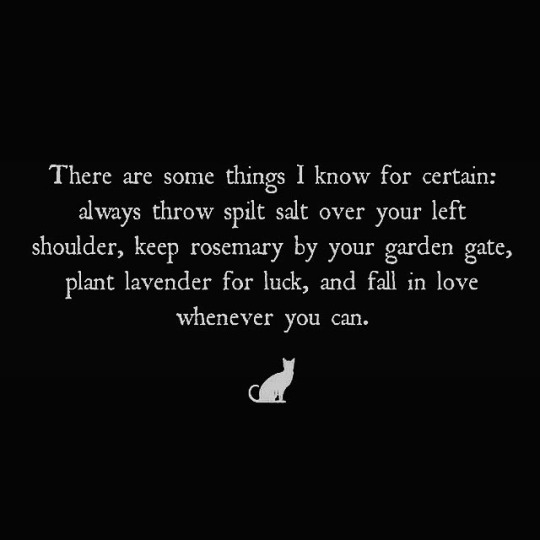
#practical magic#witchcraft#pagan witch#witch#witches#kitchen witch#witchy#witch community#pagan#pagan wicca#witchblr#witch aesthetic#aesthetic#green witch#celtic paganism#magick#magical#spells#spellwork#herbs#plants#luck#love#protection#alice hoffman#samhain#quotes#quoteoftheday
990 notes
·
View notes
Text
Spectral Whispers: Exploring the Enigmatic Realm of Celtic Faeries with W.S.
The ethereal world of Celtic faeries, where tales of magic and wonder entwine with the whispers of the wind, guiding us through enchanted forests and across shimmering meadows. So, brew a cup of tea, settle in, and let us unveil the captivating allure of Celtic faerie folklore.
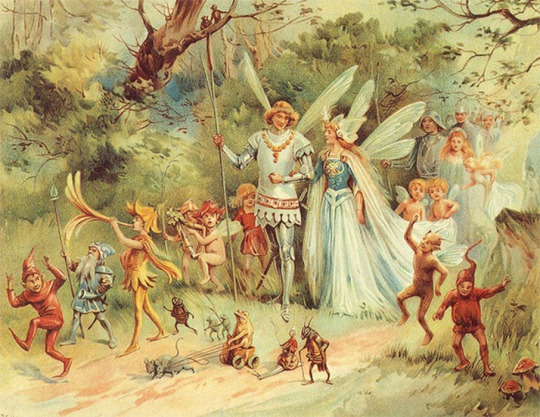
Firstly while I will be using the term Fairies in this article for continuity, the Irish refrain from calling them the Fae or Fairies and Prefer to call them " The Good People' or " The Little People". The Fairies of the Emerald Isles were said to reside in a parallel universe to that of the mundane world.
Usually stated to be underground, the realm of the Fairies is said to be mostly invisible to human eyes. These are unlike the Fairies found within the writings of Disney and Modern Pop Culture. They are of a darker brood, Still Majestic and Beautiful, even downright awe inspiring. But many are said to be dangerous and uncaring for the mortals they Encounter in these folk tales.
So Let us go over some of the most well known Irish Fairies in celtic Folklore
The Who's Who of Tír na nÓg
There are hundreds of stories of faeries which stem from ireland, and while we won't go into every single one, here are some of my favorite honorable mentions from Ireland's beautiful folklore
Pooka: The Changer Of Forms
Commonly Referred to as Puca, it is a type of shape shifter in Irish Folklore which takes the shape of Animals or Humans. Commonly seen with forms similar to cats and horses, it was seen as unwise to anger these fae. Depending on the Area of Ireland, they are seen as either helpful, or as embodiments of chaos.
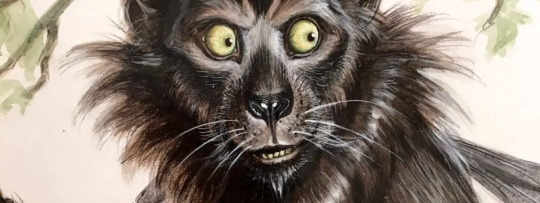
Dullahan: The Headless
The Dullahan is a malevolent harbinger of death. It is said to be the embodiment of Crom Dubh, a fertility god who demanded blood sacrifice in the form of decapitation.
This aspect of Irish folklore has been incorporated into American folkloric traditions as well, specifically in the stories of the Headless Horseman. His stateside debut was in Washington Irving's 1849 short story " The legend of sleepy hollow" while inspired by the original Irish works, The headless horseman has become an American Halloween staple.
Giving nightmares to children for decades since its release :)
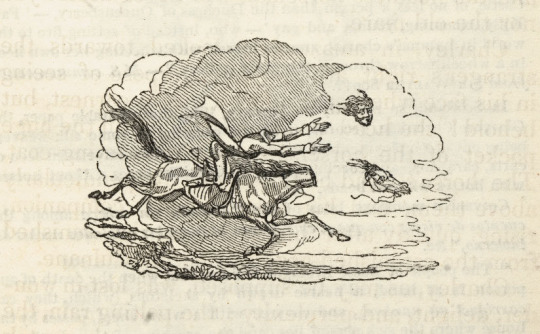
Changelings: Stealer of babes
A fairy that was left in place of a human child or baby who had been stolen by the fairies. The baby was to live amongst the humans as they raised the other in the fae realm. The stories differ depending on the situation, it was often used to explain away different developmental delays, or even unexplainable deaths of their small children.
Humans would often leave these babies out in the woods to parish if they believed they were changelings, to them they hoped by leaving them the faeries would take the trade and give them their baby back.

Banshees: Screams Of Warning
a female spirit who wails outside a home to warn of the imminent death of a family member. The scream is also known as "caoine," which literally translates to "keening". She has also been called woman of the mound as in many of the stories she stands outside the homes and cry's from the fairy Mounds.

Leprechaun: Punishers Of Greed
a type of fairy that is often depicted as a tiny, bearded man wearing an emerald ensemble. Leprechauns are said to live in remote places and make shoes and brogues. They are solitary by nature and are a symbol of what happens when you let your greed win. Quit literally the Folly of the Get Rich Quick Mentality Of Many Humans.

These are but a small sample of the many fairies found throughout Irish and Celtic Folklore, These specifically can trace their origins back to The Tuatha De Danann or fairy nobility. Also seen as Gods and Demons depending on the era. As well as the original inhabitants of Ireland who only Tolerate our existence so long as we don't disturb the places and sacred sites they hold dear.
Faeries impact on Modern Day
All over Ireland, farmers have left portions of their land, in the form of Ring Forts untouched for centuries. These are believed to be the homes of the fairies and are overgrown with shrubs and bush. But farmers would rather see this resource go to waste than risk incurring the wrath of the fairies, which can result in anything from crop failure to DEATH.
This a recurring theme you will see throughout Irish history a respect for the property owned by the Fae and a rightful fear at the consequences of disturbing sacred ground.
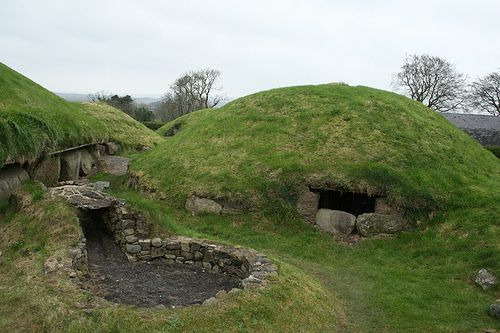
How to not Piss Off The Fae
Folk Practices to appease fairies or at the very least keep you on their good side include Offerings of sweets and goods in which holds value to the person leaving the offering, back in the day it was things like this
Milk or cream
Bread
Honey
Butter
Porridge
Gold
Tobacco
Poitín
I hope you enjoyed learning about the faeries of Celtic Folklore with me today, remember to stay curious my friends.
Thank you for sitting down and having Tea with me on the Other side of the Great Divide
𓆣Patreon Saw It First, Come Join Us For Early Access To Wanderers Tea Time𓆣
☕ Like My Blog? Then consider buying me a Ko-Fi ☕

#magick#fairies#fae#folklore#celtic folklore#folklorist#irish#gaelic#magus#witch#witchcraft#witches#witchblr#WanderingSorcerer#occult#occultism#occultist#demons#ars goetia#solomonic magick#magi#grimoire#grimoires#witchythings#witchlife#pagan witch#herbalist#plants and herbs#herbology#herbalism
161 notes
·
View notes
Text
☾ MOON IN SCORPIO
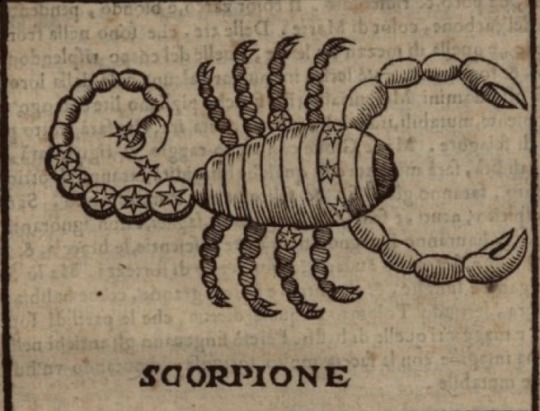


this should be an eventful moon, particularly for water/Scorpio placements as it signifies the ending of partnerships, affairs and friendships. as well as the mending of family matters. for some of you, you will be welcoming new life as a baby is born into your family. perhaps a parent or grandparent will pay you a visit after a period of distance. this is a time for your kin to gather and strengthen your bonds not only emotionally but also materially. somebody may be moving in with you, or you may be inheriting a property or item of value.
Scorpio represents the reproductive organs, blood and bowels
#tarot readings#astrology tarot#moon in scorpio#scorpio moon#tarot blog#pagan#divination#cartomancy#astrology#witchblr#water signs#moon magic#10 of pentacles#satanist#theistic satanism#hellenic paganism#celtic magick#goetia#horoscope#witchcraft
14 notes
·
View notes
Text

The Cailleach is the Celtic Goddess of Winter & Storms, this Charm Bracelet is in honor of the Cailleach. She is also known as the Celtic Hag. This Celtic Deity Bracelet is made with a Snowflake charm, Angelite and Amethyst.
- Quick to Ship
- 7 - 7.5 inches
- Celtic Charm Bracelet
- Real Crystal Gemstones
- Tarnish Resistant Wire
🖤 Due to COVID everything is sanitized before being packaged and shipped out
🖤 If you see something you like but it’s not quiet perfect, feel free to message me because I am taking commissions/customs at this time





#celtic goddess#celtic gods#celtic mythology#celtic#celtic pantheon#celtic polytheism#celtic paganism#celtic magick#cailleach#the hag#winter solstice#goddess of winter#goddess of storm#witchblr#witchcraft#witchythings#paganism#witch crafts#hand made#hand made jewelry#smallbusiness#witchcore#celtic jewelry#deity worship#deity witchcraft#deity work#devotional jewelry#celtic pagan#pagan business#pagan witch
2 notes
·
View notes
Text
⛤SAMHAIN: History and Meaning⛤
Samhain is the holiest and most important Sabbat of the whole wheel of the year; it combines a number of elements: the agricultural crop, the wild crop, the transition of the autumn season into a winter temperature and the commemoration of the day of the dead.
It is the time to remember our ancestors and our loved ones who greeted us, and as a solemn time it should tend towards contemplation of the mystery of life and death as taught by the ancients.
Samhain is a time for introspection, to empty the false of our mind, heart and soul. It is time to heal the source of our deepest wounds and those we have inflicted on others, before time overtakes us. It is the time when we can learn to see clearly.
The true victory of self is in the cauldron. Now we need to look at the nature of our motives and the outcome of our actions.
Samhain is the time to communicate and listen to others, a time of death, of the thought of the ancestors and what we are thanks to them.
The leaves are falling, the apples are ripe, and the ice is on the ground.
There is the scent of Autumn, an indescribable smell of October - pumpkins, apples, cinnamon, dry leaves and beer.
Samhain approaches and the veil between the worlds gets thinner every night.
You can feel it in the air that the Otherworld is approaching and the sunlight turns into sunset light. Our ancestors are celebrated in Samhain, it is the time of the dead and the dying.
The spirits of the departed are closest to our hearts, at this time when even the earth is dying.
A melancholy and introspective mood descends upon us in this dark time of ends and completions; and therefore possible rebirths.
In the growing shadows, darkness and fog prevail while the trees give off their colorful leaves, taking the appearance of skeletons.
This was also the time when cattle were killed for meat to be consumed in the winter months (the symbolic death of the wheat God).
All the cereals still in the fields after Samhain were considered taboo, no one could collect them and became an offering for the spirits of nature.
⛤Samhain is the best known of all Wicca Wheel of the Year celebrations. And there is a reason for all of this. Obviously, first of all it is a festive Sabbat
and above all it is the only Sabbat that people recognize as a pagan festival and they love to celebrate it anyway.
In years past, the Christian Church decided, according to the tradition of the time, that people could hold this festival that they were so attached to, but that it needed a new name. He also decided that instead of being a feast to celebrate all the dead, it was to be transformed into a celebration of the dead saints.
So the party turned into the best known Halloween.
⛤Our ancestors used to protect themselves this night, cutting out faces in vegetables and placing them near the windows.
This gave birth to the so-called Jack o 'Lantern pumpkin.
These carved pumpkin faces were placed next to the windows to keep the spirits of this night away.
Being the veil of the subtle worlds, it was not only the ancestors who returned to earth, but all the people of the Underworld.
⛤Samhain is obviously the end of the "summer" mid-year(The Celts divided the year into two parts, summer and winter).
It is also the last harvest before the snow.
It is the opposite black of Beltane, announces the role of the Dark and celebrates the Crone. It is also considered the first of the witchcraft year.
Since the Celts considered time to be circular rather than linear, the night is both the end and the beginning of the year.
For this reason, Samhain is a feast of divination and a time for the dead.
A night of contradiction where life and death, opposite but parts of the same cycle, were celebrated together.
⛤Sometimes most people think that this holiday is to venerate an evil god by the name of Samhain, but this deity does not exist in any Celtic or European pantheon.
It is a literary creation of the twentieth century, without a foundation of reality.
Fables of Druids who left pumpkins at the doors of families who had provided sacrifices for Samhain (Satan).
This is not TRUE! Samhain today is famous as Halloween, and obviously still has much of the old Celtic tradition, despite the church's attempts to turn it into a day of prayer for the pantheon of saints.
⛤The best known aspect of Samhain is the Festival of the Dead. It is a night to honor ancestors, to celebrate their lives and to respect their memories. It is a time when families get together and listen to stories about the life of their great grandparents and legends about kings and their knights. It was believed that on this night, the dead could return to earth to find the living. It was common practice to prepare the table even for those who have recently died and to leave food for their wandering souls. Lights should have been placed on windows and along streets to guide the spirits of the night.

Witchfully Yours,
⛤Isidora⛤
#samhain#all hallows eve#magick#kitchen witch#witchcraft#witch aesthetic#witchblr#witches#witchy things#witchyvibes#wicca#witchcore#trick or treat#jack o lantern#halloween aesthetic#halloween decorations#pagan wicca#eclectic wicca#wiccan#celtic wicca#wiccablr#green wicca#kitchen wicca#pagan#paganism#halloween#spooky season#happy halloween#spirituality#spiritualawakening
950 notes
·
View notes
Photo

Samhain: The Ancient Celtic Origins of Halloween
Halloween is one of the most important days of the year among many Wiccan and goth communities. It is also a fun mainstream holiday that kids with a sweet tooth look forward to all year!
Halloween is based on an ancient Celtic festival known as Samhain, which marked the end of the harvest season and the start of the cold and dark winter months. The supernatural was thought to be more potent during this darker half of the year, and rituals conducted at Samhain would protect the community over the coming months.
Many modern Halloween practices draw on the traditional rituals conducted around Samhain, brought to the United States by Irish and Scottish immigrants. But let’s take a closer look at the traditional Samhain festival.
Gaelic Festival of the Harvest
Samhain belongs principally to the Gaelic world. It was an important festival day in Ireland, Scotland, and the Isle of Man. It was held annually on 1 November, which meant celebrations started during the evening on 31 October since the Celtic day began at sunset.
While Samhain was best associated with the Irish world, similar festivals were conducted around the same time of year by other Celtic communities. In Wales, it was known as Calan Gaeal, in Cornwall as Kalan Gwav, and in Brittany as Kalan Goanv.
It is no surprise that this date was considered important by many different communities. It is halfway between the Autumn equinox and the Winter solstice, which, in the northern hemisphere, is when the days start to get shorter and colder. This was extremely significant in many parts of the world, such as northern Europe, where the sun barely rises in the height of winter. The Norse people living in Scandinavia also marked this important moment in the Wheel of the Year with a different festival known as Alfablot.
Ancient Festival
There is good evidence that Samhain was an ancient festival. Several Neolithic passage tombs found in Ireland are aligned with the rising sun on Samhain, suggesting that the date was already marked out as important. A first-century BCE calendar, known as the Gaulish Coligny Calendar, calls this time of year Samoni.
The earliest clear evidence for Samhain as we know it today comes from the earliest examples of Irish literature, which date to the 9th century. Ireland was already Christianized by this time, so the traditions and practices described are a mix of old Pagan customs and Christian overlays and influences.
There is some evidence to suggest that the Pagan festival of Samhain was associated with the god Chrom Cruach, who seems to have been both a solar and a fertility deity. He is a wizened god hidden by mists who accepts “firstborn” sacrifices in exchange for good harvests.
While firstborn sacrifices were probably, in many cases, first harvests, there is also evidence that Chrom Cruach received human sacrifice. But rather than babies, he seems to have received kings. It is suspected that several Irish bog burials represent the ritual sacrifice of kings or other important persons. There is good evidence that many of them were interred around the time of Samhain.
Samhain Gatherings
By the 9th century, Samhain was a time of festival and celebration. Communities would gather in large groups to eat, drink, and be merry for about a week around the specific dates of Samhain. This meant that Samhain also had political importance as it was a time to reaffirm bonds with neighbors and allies, and leaders could confirm and pass rules and laws.
Many of the stories of Irish literature are set during Samhain as this is a time when people came together for festivities, marriages, and also conflict.
With the community gathered, the practice of mumming or guising, the root of trick-or-treating, was practiced. People would dress up in masked costumes to hide their identities and go from place to place dancing and reciting verses in exchange for food. Traditions around hospitality and welcoming guests meant that denying these passersby food could bring bad luck and perhaps also a trick from the disappointed players.
Day of the Dead
Samhain and also Beltane, which falls on May 1 when the days start to get longer, are considered liminal moments. At these times, the veil between the worlds is at its thinnest, and there is more interaction between the mortal and the supernatural. Ghosts, fairies, and demons are considered to be more powerful when the sun is weak, so Samhain marks the beginning of a dangerous period in general. The festival is a portal moment when forces can easily move between worlds.
In Irish literature, there are many stories of deceased ancestors returning to see their homes at Samhain (and they aren’t always happy with what they see!). More dangerous entities can also pass between the worlds, killing livestock and burning down homes if they so choose.
For this reason, Samhain rituals were often conducted at burial mounds, which were considered portals to the other world. Protective bonfires were built, and sacrifices were made to appease the spirits, called collectively the Aos Si. When people returned home, they would take a spark from the ritual bonfire to light their own hearth and lay out an extra plate for the honored ancestors.
Divination
The thin veil between the world meant that this was also the perfect time for divination practices. For example, stones were often cast into the bonfire during the festivities, and then an experienced diviner could read the future based on their positioning and burning.
Back at home, families would also engage in fun divination practices, often using apples and hazelnuts, both associated with the practice.
Games such as bobbing for apples could reveal whether a person would marry or have children in the coming months. People would also peel an apple in a single long strand while asking a question. They would then throw the peel over a shoulder, and the shape of the peel could provide an answer.
Two hazelnuts were named for an individual and their heart’s desire and then placed on the fire to roast. If the hazelnuts jumped away from the fire, this was not a good sign for the match. But if the two roasted quietly side by side, this was a good omen.
Interested in divination? You will find Tarot Cards and Runestones in the store. Read our guide to how to use Tarot Cards here.
Witches of Samhain
In modern Paganism and Wicca, Samhain has been adopted as one of the principal Sabbats of the Wheel of the Year. While practices vary, these modern festivals are also based on the belief that this is a moment when the veil between the worlds is thin, so this is the ideal time to engage with our ancestors and the supernatural.
It also seems that Samhain has long been the domain of witches. One of the principal sites in Ireland where Samhain bonfires were built and rituals conducted is known as the Hill of Ward, which is the burial mound for Tlachtga.
Tlachtga was the daughter of the Arch Druid Mug Ruith, and she traveled with her father, learning his secrets and becoming an accomplished witch. She was reportedly raped by the sorcerer Simon Magus and, as a result, gave birth to three sons on this very mound, where she also died.
The resting place of the powerful witch was clearly considered a potent portal during the time of Samhain.
Some believe that Tlachtga only became a witch in Christian sources and, before this, was a Pagan sun goddess. This would also make her an appropriate goddess for Samhain, alongside the sun dog Crom Cruach.
How will you be celebrating Halloween?
It is not hard to see the roots of modern Halloween practices in many of the rituals and activities associated with the ancient Gaelic festival of Samhain. But for most people, Halloween has lost its spiritual meaning and is just some good fun.
But there is a growing group of Neopagans and individuals who just want to connect more with the natural cycles of the year that are reviving traditional Samhain practices.
So, the question is, how will you be celebrating this important date in the calendar? Let us know in the comments section below.
[Read full blog post here]
#grimoire#samhain#witchy#witchcraft#wicca#occult#pagan#paganism#celtic#halloween#babywitch#witches of tumblr#witchblr#magick#pagan witch#beginner witch#witch community#book of shadows#witch tips
512 notes
·
View notes
Text
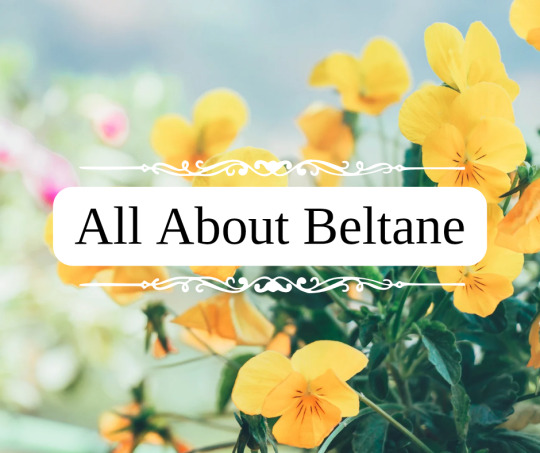
All About Beltane
Beltane, also known as Bealtaine in Irish, is a Gaelic holiday traditionally held on May 1st or the halfway point between the spring equinox and the summer solstice. It is believed to be named after the Celtic sun god Belenus. It was widely observed in Ireland, Scotland, and the Isle Of Man, and is one of the 4 major Celtic fire festivals. It is mentioned in even the earliest Irish literature and marked the beginning of summer and used as the marker to drive cattle into their summer pastures. Although public celebrations have mostly fallen out after the 20th century and many traditions have been mixed with other cultural holidays (such as the Roman holiday May Day), many Celtic Neopagans and Wiccans still celebrate, and many local traditions still continue, causing it to now get a cultural revival.
Traditionally, rituals were held to protect the livestock that moved pastures, along with crops, dairy products, and people, and to encourage growth. It was also important to appease the Aos Sí, or nature spirits/fairies, which were believed to be more active then.
According to early medieval texts in 908, druids would make two bonfires and drive cattle between them to protect them from disease. In the 18th and 19th centuries, bonfires continued to be an important part of the celebrations. Before the bonfires were lit, all hearth fires were put out, and then relit using the fire from the Beltane bonfires after the celebration.
Continuing into the 19th century, cattle were still driven over or between flames, or sometimes around the fires or made to leap over. The people themselves did as well for good luck and protection. Once the fires died down, people would dab themselves with the ashes and sprinkle them over their crops and livestock. Torches from the bonfires would also be brought home and carried around the home or boundaries, and also used to relight the hearth.
Food was also an important part of the Beltane festival, and usually included a feast of lamb, which, historically, was sacrificed. In 1769, it was written that a hot drink, called a caudle, made of eggs, butter, oatmeal, and milk was served, along with tossing a bit on the ground as an offering. A Beltane Bannock, a type of oatmeal cake, was also written to be important and had a few traditions around it.
In one tradition, the Beltane Bannock had nine knobs on it and each person would take the bannock and face the fire, proceeding to break off the knobs of bannock one at a time and tossing them behind their shoulder as an offering to the spirits for protection over their livestock and from predators (one for the cow, one for the sheep, one for the fox, etc). Afterwards, they would drink the caudle.
According to other 18th century writers, there was another Beltane Bannock tradition where the bannock would be cut into slices and one was marked with charcoal. The slices were then thrown into a bonnet and everyone would take one out while blindfolded. According to one writer, whoever pulled the marked bannock slice had to leap through the fire 3 times. According to another, the person would instead be pretend-thrown into the fire and for some time afterward people would talk about the person as if they were dead. This may have always been symbolic, or it may have been a tradition from a time where actual human sacrifice was used. This tradition was also near identical to May Day traditions that occurred in Wales and other parts of Europe, however.
Other traditions including flowers and plants were also observed, especially ones that evoked fire. Documents from the 19th century cite that yellow and white flowers, such as primrose, rowan, hawthorn, gorse, hazel, and marsh marigold was used and placed at doorways and windows. Sometimes they were strewn into garland, and other times they were made into bouquets, made into crosses, or fastened to them. They were also fastened to cows and milking/butter equipment.
Decorating a May Bush or May Bough was also a widespread tradition, and it usually consisted of a small tree or branch (typically hawthorn, rowan, holly, or sycamore) decorated with bright flowers, ribbons, candles, painted shells or egg shells from Easter, and more. In some traditions they also decorated it with gold and silver May Balls, which were hurling balls, that were then either given out to children or gifted to winners of a hurling match. It was also known as the only acceptable time to cut a thorn tree, as they were associated with fairies and may have also been a relic of worshipping tree spirits. It would either be decorated where it grew, or branches hung over windows, doors, roofs, and barns either inside or outside. Traditionally, it was the responsibility of the eldest of the house to decorate it.
The tree was usually left up until May 31st, but in some traditions it would be burned in the festival bonfire after singing and dancing around it. In Dublin and Belfast, May Bushes were brought into town and decorated by the whole neighborhood, with each neighborhood competing for the most beautiful bush. These competitions could also lead to neighborhoods attempting to steal others May Bushes, which eventually led to the May Bush being outlawed in Victorian times.
Appeasing the fairies was also a big part in Beltane celebrations, with many traditions revolving around offerings to the fairies and also warding them off, as there were many fears around them stealing dairy. One protection tradition was to leave 3 black coals under the butter churn. Another was to hang May Boughs on the milk pails. And yet another was to hang cattle tails in the barns. Flowers were also used to decorate the cattle's horns for good luck.
Farmers would also lead a procession around the boundaries of the farm and would "carry with them seeds of grain, implements of husbandry, the first well water, and the herb vervain (or rowan)", stopping at the four cardinal points of direction starting at the east, and performing rituals towards each direction at each stop. These processions were said to bring protection of their farm produce and encourage fertility. Some people also made the sign of the cross using milk on the backside of cattle for good luck.
As for fairy offerings, one tradition was to pour milk or leave food at places associated with the fairies such as "fairy trees". In Ireland, cattle were brought to "fairy forts" where a small amount of their blood was poured into the earth with prayers of the herd's safety. Sometimes, the blood would be left to dry and then be burnt.
Visiting holy wells was also a popular way to celebrate Beltane. Visitors would walk sunwise, moving from east to west, around the well while praying for health. They would then leave offerings of coins or cloth. The first water drawn from the well on Beltane was thought to be especially potent, and would bring good luck to the person who drew it.
Morning dew on Beltane was also thought to bring goodluck and health, and maidens would wash their face with it or roll in it at dawn or before sunrise on Beltane. It was also collected in a jar, left in sunlight, and then filtered. The dew was said to increase sexual attractiveness, maintain youthfulness, protect from sun damage, and ensure skin health during the ensuing year.
Modern day celebrations may vary from these more traditional festival activities, but many choose to incorporate or take inspiration from the traditions at least. Popular traditions still revolve around bonfires, feasts, decorating a May Bush, and focusing on protection and growth.
Beltane Associations
Colors - yellow, white, red, green
Food - lamb, milk and dairy, beef, bannocks, caudle, cakes
Animals - cattle, sheep, other herd animals
Items - primrose, rowan, hawthorn, gorse, hazel, marsh marigold, holly, sycamore, yellow and white flowers, flower garland, greenery, morning dew, dairy products
Crystals - citrine, fire agate, fire opal, carnelian, red and yellow jasper
Other - protection, fertility, good luck, fire, smoke, ash, sun, bonfires, farming
Ways To Celebrate
light a bonfire
jump over or dance around a bonfire
decorate a May Bush or May Bough
craft and hang flower garland
bake Beltane Bannocks
collect morning dew
create some caudle
ward and protect your home or property
leave offerings for the fairies
focus on protection, growth, and luck magic
enjoy time in the sun
have a feast
create a bouquet out of yellow and white flowers
visit a farm or petting zoo
#beltane#beltaine#bealtaine#celtic#gaelic#irish#scottish#pagan#witch#witchy#wicca#may day#magick#magic#magickal#grimoire#tradition#celebrate#bonfire#fire festival#witchcraft#spiritual#witchblr#witch community#paganism#pagan witch#celtic paganism#paganblr#about#dairy
39 notes
·
View notes
Text

"—I prayed for strength, and life gave me hard times at my weakest.
—I prayed for happiness, and life gave me sorrowful times.
—I asked for forgiveness, and I received ridicule and blame from others for all my mistakes.
—I prayed to change the world, and ended up becoming the product of the world."
"Life did not punish me, or play a cruel sick joke. Life answered my callings with its own; no strength can come without first being weak, no happiness can be felt without first knowing true sorrow; no forgiveness can arise without first forgiving yourself, and no change can occur to the world without first creating the change in yourself. To seek life, to know life; we must accept death. Experience death in ourselves and in the expectations we perceive life to be. To be born again, one must be annihilated—to experience death in what one perceived themselves to be and realize the masqueraded existence of ones illusion.
To undergo change, we must peer beneath the curtained mirror, as it is ultimately us that can only change ourselves. It is what you do in your circumstances which define who you truly are. What you choose to see at your darkest hour and what you choose to be, life does not punish you but prepares you for what's yet to come."
~Mise-n-abyme
|Artwork: 'Awen' — Silk Alchemy, Unknown
#alchemy#spirit#words#self development#dark night of the soul#wisdom#occult#mysticism#esoteric#spirituality#look within#philosophy#ancient philosophy#writers and poets#samsara#celtic#coming of age#hermeticism#magick#initiation#mindbodysoul#mindbodyspirit#nonduality#duality#tribulation#transcendental#knowthyself#forbidden knowledge#poets on tumblr#ancient wisdom
155 notes
·
View notes